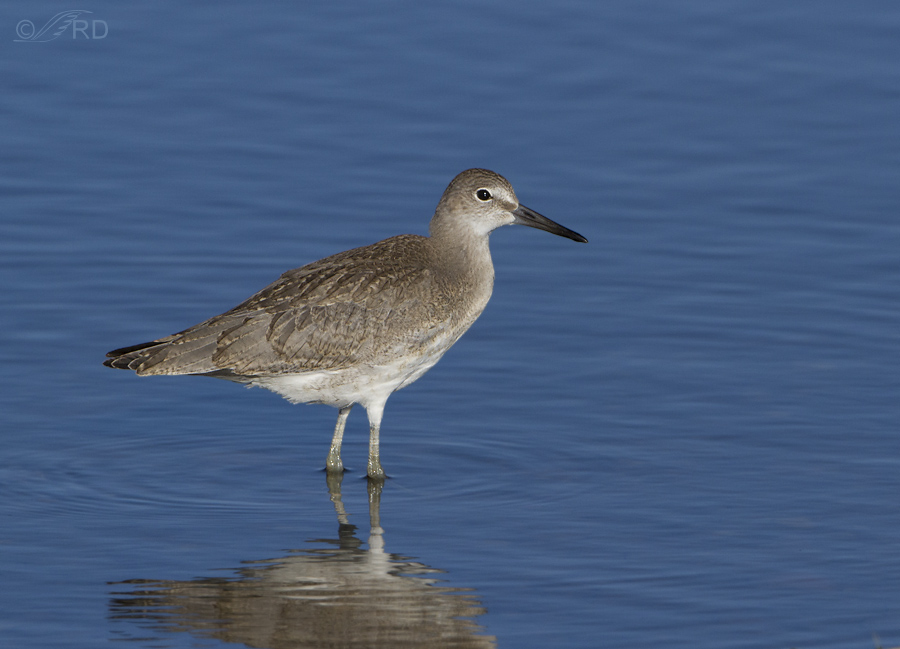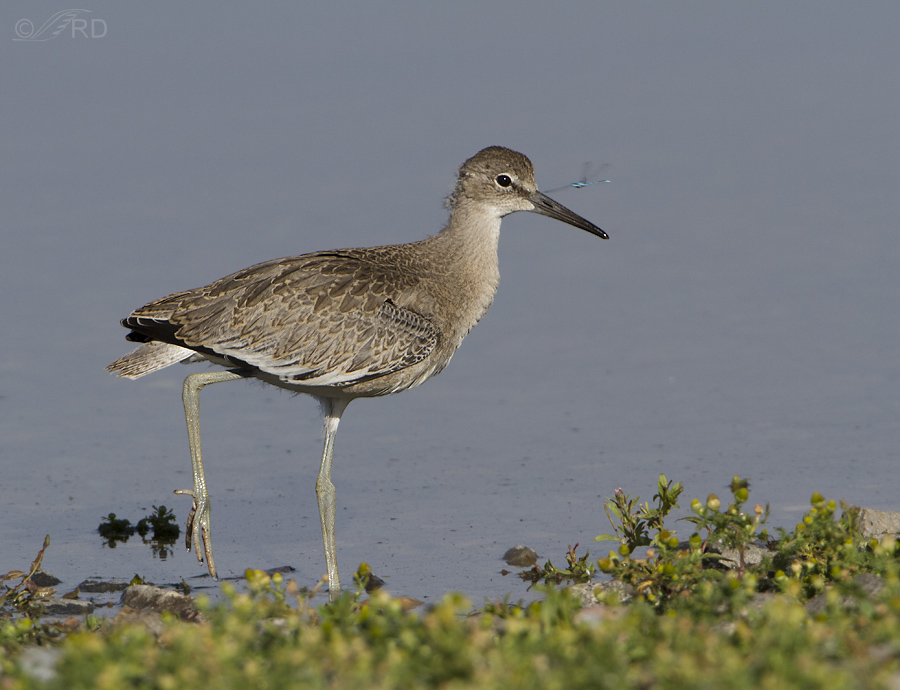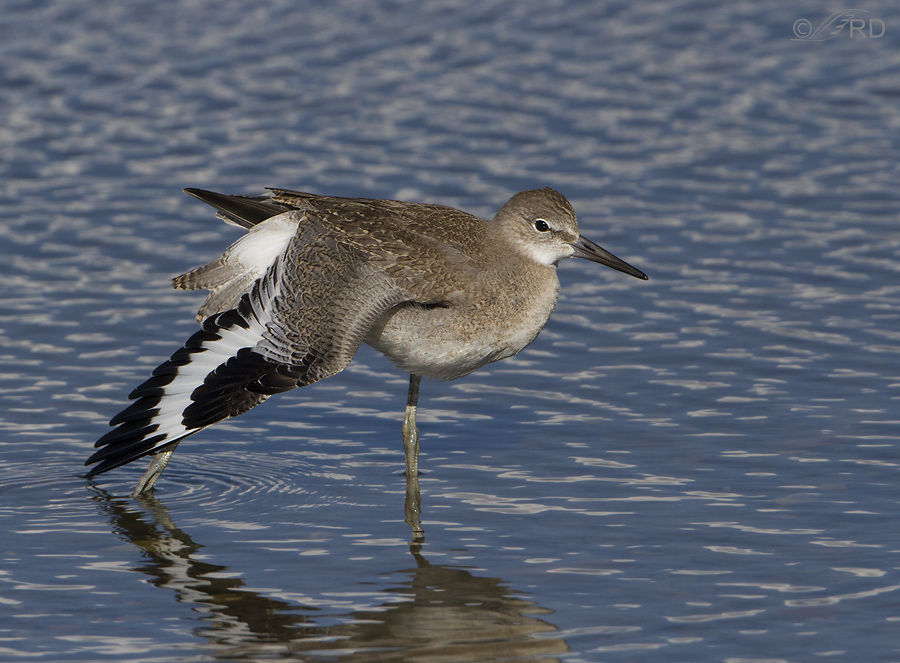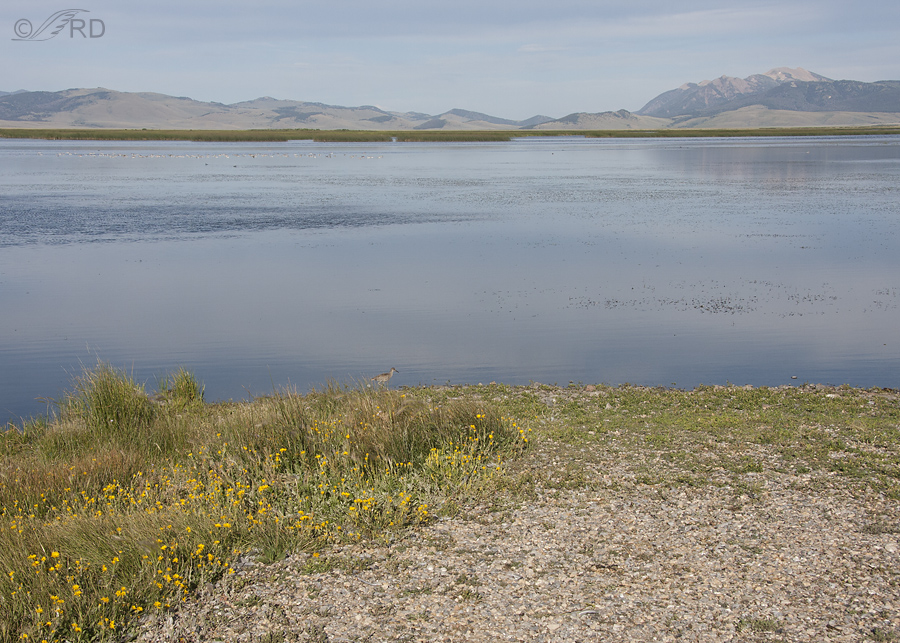On my mid-July trip to the Centennial Valley I spent several days with an adult Willet and two juveniles. I reliably found them foraging for insects where a dirt road met Lower Red Rock Lake. Most of the shore birds and wading birds in this area are truly wild and difficult to approach but these three birds were the exception as they repeatedly let me get close as they fed and preened.

1/2500, f/7.1, ISO 400, 500 f/4
This was the most perfectly coiffed of the two juveniles, as the other youngster had a patch of unruly feathers on the back of its head and upper neck.

1/2500, f/7.1, ISO 500, 500 f/4
This particular site provided a bountiful Arthropod smorgasbord for the willets, both in the water and on the shoreline. The birds would feed on aquatic insects and crustaceans in the shallow water for a while and then get a little variety in their diet by coming up onto the shore and gobbling down hordes of terrestrial insects. Here, the more unkempt juvie (notice the fluff of feathers on the back of the head) feeds on a variety of dipterans that it flushes from the vegetation. I’ve cropped this image unconventionally to show more of the “bugs” in the air. I didn’t get a catch light in this shot but this image showed the insects best.

1/2000, f/7.1, ISO 400, 500 f/4. 1.4 tc
At times some of the insects almost seemed to dare the Willets to pluck them out of the air.

1/1600, f/7.1, ISO 400, 500 f/4
I like the one-footed balancing act in this stretching pose.

1/2500, f/7.1, ISO 400, 500 f/4
The juveniles in particular seemed to do a lot of stretching.

I sometimes like to include a shot at the end of a post that shows the setting I was working with.
The biological diversity of this entire area is amazing – a dream come true for this nature photographer and retired biology/zoology teacher.
Ron


These are beautiful birds, and easy to identify when they fly and spread their distinctive wings. I am also thrilled with the shots of the insects, and the web of life that they embody with their ubiquitous, annoying presence. Once again, thanks for the reminder that flies have a reason to be!
I can always tell that you “get it” Tana.
Their drab plumage belies quite striking flight feathers! Pretty birds.
Thank you Mike. Yes, Willets truly transform from relatively drab to striking when their wings are extended.
Hope you, Bryce and your entire crew are doing well and having fun on the mountain!
A great series of shots, Ron, as usual. I like the second one best, I think, because it shows more of the habitat that it was feeding in. I also like that final wide shot. It shows what you have to work with. Great shots without your 1.4 converter. Is that final shot a little wider that natural, and were you able to drive your truck any closer.
Thanks Bob. That final shot was taken with my “other” camera and lens at 33mm. I had to crop my truck’s shadow from the bottom of the shot so we were already fairly close. I had taken my tc off because I kept clipping stretching poses. I probably could have gotten a little closer but when shooting from my high pickup that would make the angle even steeper. Trade-offs, as you know, are the name of our game.
I loved the stretches – birds do seem to stretch with their entire bodies, which is always a delight to watch. Am I right in thinking that much of Montana’s climate is on the extreme side? Your final shot looked like a fairly ‘challenging’ environment and I was more than happy to hear that it is one rich in biological diversity.
I’m fond of stretching poses too Elephant’s Child – which is probably why I post so many of them.
And yes, Montana’s climate is very definitely on the “extreme side” for much of the year and this area of the state is more extreme than most (only a couple of miles from the continental divide). But in summer, when these shots were taken, it is often quite mild. We saw temps above 90 degrees F while we were there this summer.